
Blog
The Ultimate Checklist for Choosing the Right Plastic Bottles for Your Business Needs
In today's fast-paced market, the importance of selecting the right plastic bottles for your business cannot be overstated. According to a report by Allied Market Research, the global plastic bottle market was valued at approximately $48.8 billion in 2020 and is projected to reach $70.7 billion by 2028, showing a substantial growth driven by consumer demand for convenience and sustainability. Choosing the appropriate plastic bottles not only ensures product safety and integrity but also enhances brand perception and aligns with environmental considerations. With various types of materials, designs, and functionalities available, it becomes crucial for businesses to make informed decisions that cater to their specific needs.

This ultimate checklist serves as a guide to navigating the complexities of plastic bottle selection, ensuring that your choices are both strategic and effective in meeting the demands of your market.
Understanding Your Product Requirements for Plastic Bottles
When selecting plastic bottles for your business, it is essential to first understand your product requirements. Different products have varying storage needs, which can significantly influence the type of plastic bottle you choose. For example, if you are packaging a liquid that requires a strong barrier against moisture, high-density polyethylene (HDPE) or polyethylene terephthalate (PET) may be ideal choices. Conversely, if your product is sensitive to light, opaque options or dark-colored bottles will help preserve its quality and efficacy.

Another crucial consideration is the compatibility of the plastic with your product's chemical properties. Certain substances may react negatively with specific types of plastic, leading to contamination or degradation. Therefore, conducting compatibility tests is essential before finalizing your selection. Additionally, consider the bottle's size and shape, as these factors can impact both consumer convenience and shelf appeal. By comprehensively assessing your product requirements, from material compatibility to design considerations, you can make informed decisions that enhance your brand's success in the competitive market.
Evaluating Different Types of Plastic Materials and Their Uses
When selecting plastic bottles for your business, understanding the different types of plastic materials is crucial. The most commonly used plastics in bottle manufacturing include PET (Polyethylene Terephthalate), HDPE (High-Density Polyethylene), and PP (Polypropylene). According to the Plastics Industry Association, PET is favored for beverage packaging due to its excellent barrier properties and recyclability. In fact, over 1.5 billion pounds of PET are recycled in the U.S. each year, making it a sustainable choice for companies looking to reduce their environmental impact.
HDPE is another popular option, especially for products requiring more durability, such as cleaning supplies and household chemicals. It boasts a high strength-to-density ratio, allowing for lightweight yet robust packaging. The American Chemistry Council reports that HDPE accounted for more than 30% of plastic resin use in the U.S. in 2022. Meanwhile, PP is known for its resistance to heat and chemical exposure, ideal for applications in industries like pharmaceuticals and food packaging. Each type of plastic has its unique benefits, and selecting the right one can significantly impact both product preservation and consumer safety.
Assessing Bottle Sizes and Shapes for Optimal Functionality
When selecting plastic bottles for business needs, assessing bottle sizes and shapes is paramount for ensuring optimal functionality. According to a 2021 report by Smithers Pira, the global plastic bottle market is projected to reach 1.1 billion units by 2027, emphasizing the importance of choosing the right design to cater to specific industry requirements. Various sectors, including beverage, personal care, and pharmaceuticals, demand different bottle sizes, often influenced by consumer convenience and market trends.
 Bottle shape also plays a critical role in usability and branding. For instance, research from Packaging Strategies indicates that consumers are 75% more likely to purchase a product with an ergonomically designed bottle that fits comfortably in hand. Additionally, specific shapes can enhance stackability for transportation and storage, directly impacting logistics costs. When evaluating options, businesses should consider both the functional aspects of sizes and the aesthetic appeal of shapes to align with their brand identity and operational efficiency.
Bottle shape also plays a critical role in usability and branding. For instance, research from Packaging Strategies indicates that consumers are 75% more likely to purchase a product with an ergonomically designed bottle that fits comfortably in hand. Additionally, specific shapes can enhance stackability for transportation and storage, directly impacting logistics costs. When evaluating options, businesses should consider both the functional aspects of sizes and the aesthetic appeal of shapes to align with their brand identity and operational efficiency.
Exploring Customization Options for Branding and User Experience
When selecting plastic bottles for your business, customization options play a significant role in enhancing both branding and user experience. Personalized packaging not only attracts customers but also fosters loyalty, as consumers are increasingly drawn to brands that resonate with their individual preferences. Modern AI tools can analyze user behaviors and preferences, enabling businesses to tailor packaging designs that reflect their target audience’s characteristics. This creates a more engaging product that stands out on the shelves.
Moreover, embracing customization in your product designs extends beyond mere aesthetic appeal; it encourages a deeper connection with your customers. Innovative approaches, such as personalized labels or unique bottle shapes, can make your brand memorable. As the market evolves, staying ahead through personalization strategies, informed by data and insights, will be vital for maintaining relevance. Thus, investing in customization options not only enhances user experience but also solidifies your brand's identity in a competitive landscape.
The Ultimate Checklist for Choosing the Right Plastic Bottles for Your Business Needs
| Dimension | Consideration | Options | Customization Available |
|---|---|---|---|
| Material Type | Durability and safety | PET, HDPE, PP | Label, color, shape |
| Capacity | Volume needs | 250ml, 500ml, 1L | Custom sizes available |
| Closure Type | Ease of use | Screw cap, pump, flip top | Customized closures |
| Design Features | User experience | Grip, shape, ergonomics | Custom mold design |
| Recyclability | Environmental impact | Recyclable materials | Eco-friendly branding options |
| Production Volume | Cost efficiency | Small batches, bulk orders | Volume discounts available |
Ensuring Compliance with Safety Standards and Regulations
When selecting plastic bottles for your business, ensuring compliance with safety standards and regulations is paramount. According to a report by the Global Plastics Alliance, the packaging industry is projected to grow at a CAGR of 4.5% until 2027, emphasizing the need for manufacturers to adhere to stricter safety guidelines. Regulations like the Food and Drug Administration (FDA) standards in the United States require all plastics used in food and beverage packaging to meet specific safety criteria, ensuring that no harmful chemicals leach into products.
Moreover, the European Union has implemented stringent safety regulations under the REACH (Registration, Evaluation, Authorisation, and Restriction of Chemicals) framework, which mandates that companies must prove the safety of their plastic products before they can be marketed. Compliance with these regulations not only safeguards consumer health but also boosts brand credibility in the competitive marketplace. By investing in materials that meet these safety standards, businesses can mitigate risks and build trust with their customers, ultimately leading to long-term success in the industry.
The Ultimate Checklist for Choosing the Right Plastic Bottles for Your Business Needs
This bar chart illustrates the compliance levels of various types of plastic bottles with safety standards and regulations, which is crucial for businesses selecting the right containers for their products.
Related Posts
-
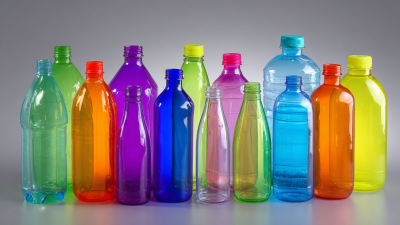
Exploring the Best Options for Bulk Plastic Bottles A Comprehensive Comparison Guide
-
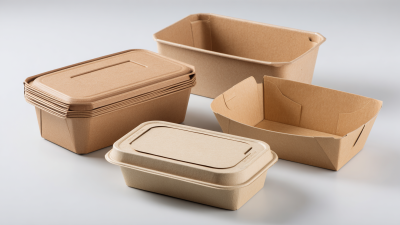
Revolutionizing Food Packaging Containers for 2025 The Ultimate Guide to Industry Trends and Innovations
-
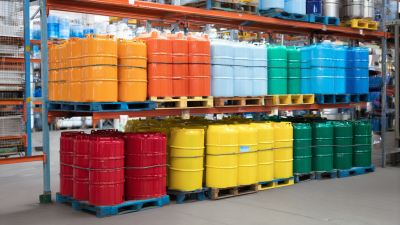
Ultimate Guide to Specifications of the Best Plastic Bulk Containers for Global Buyers
-

Ultimate Guide to Sourcing Bulk Containers for Your Business Needs
-
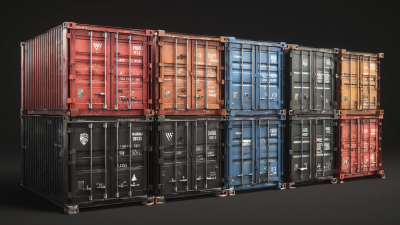
Understanding the Technical Specifications of the Best Plastic Shipping Containers with a Comprehensive Tutorial
-
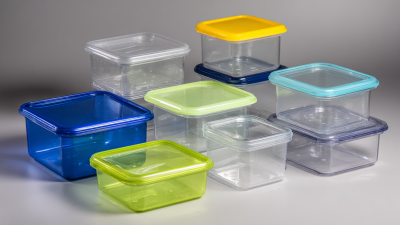
Finding Quality Suppliers for the Best Square Plastic Containers Made Easy
